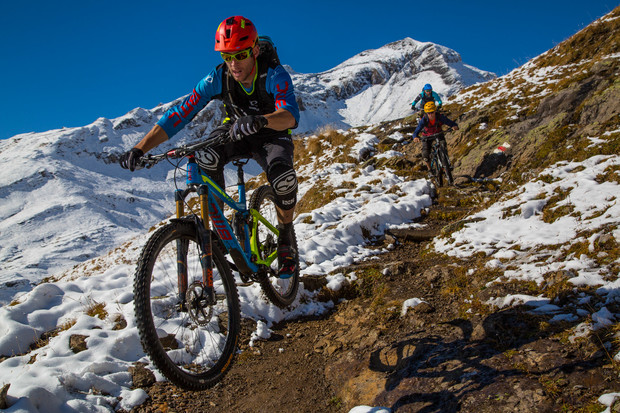 The snow's melting off your home trails, if it hasn't already, and It's time to ride. Ryan Dunfee photo.
The snow's melting off your home trails, if it hasn't already, and It's time to ride. Ryan Dunfee photo.
It's the 2016 season already. Between all the time we had ;this winter, and Sea Otter last weekend, TGR cobbled together a list of 6 trends generating momentum – or that we like – which you should be tracking if you're in a buying mood for mountain bike stuff this year.
#1: More, Lighter, and Less Nerdy Helmet & Pad Options
 Leatt's Turbine ;safety thing-y. Leatt photo.
Leatt's Turbine ;safety thing-y. Leatt photo.
As bikes get better, courses and trails get gnarlier. Lines blur, terrain diversifies and boundaries move. More challenges mean more people will crash. That's hard on people getting into, and progressing through, the sport of mountain biking. Even pros and top riders seem to garner more injuries as envelopes expand.
To counter, mountain bike companies are putting solid R&D into creating a safer riding experience: MIPS-like helmet technology, addressing higher direct-impact and rotational forces from greater speed and designing body armor that's lighter, cooler and safer. They're rolling out more comfortable gloves and braces, so you'll be more likely to wear them. Take advantage.
 6D ODS (omni-directional suspension) helmet tech.
6D ODS (omni-directional suspension) helmet tech.
A wider range of better-valued products that use "impact gel" (trademark names vary) now exist. Less hard, plastic outer-shells mean lighter weight and less stormtrooper-like gear for wearing on everyday rides.
 Shoulda' wore a full face.
Shoulda' wore a full face.
For the buyer: you have more options, so shop for comfort. If you feel comfortable, you're more likely to wear it. The only protection you'll ever regret is the piece you're not wearing when you need it. Certain brands just fit certain people better.
Make a note of any body part you habitually injure. If you have a habit of falling on your elbow, strongly consider elbow protection. Sounds obvious, I know, but sometimes we forget to check in with ourselves. And this is about you, not a trend or a product or other people.
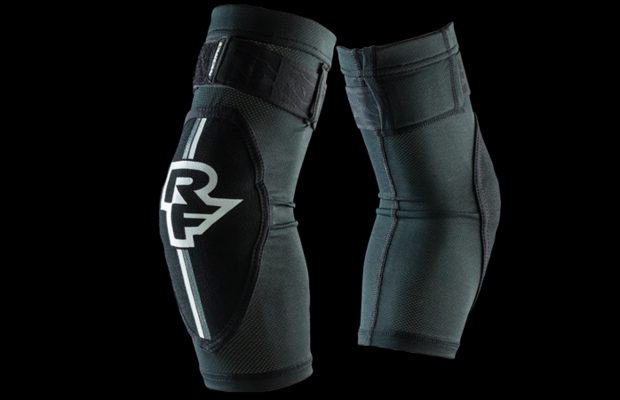 Raceface Indy Elbow pads. Raceface photo.
Raceface Indy Elbow pads. Raceface photo.
Try protection on. If you can get something thinner that fits under clothing, you're more likely to wear it. The current science is all about sleeker, comfier, and more effective pieces of protective gear.
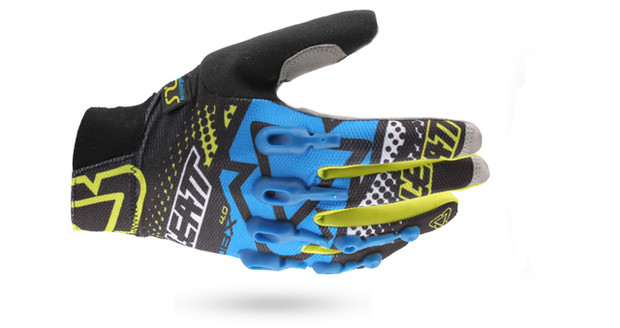 I bust my fingers, so these Leatt gloves with extra knuckle and finger padding are a boon. Leatt photo.
I bust my fingers, so these Leatt gloves with extra knuckle and finger padding are a boon. Leatt photo.
If you're buying a new hydration pack, Camelback, Evoc, POC and Leatt now all make them with integrated spine protection.
TGR is working to provide a comprehensive guide to what you should wear when and for which type of riding and terrain, so watch for that in the coming weeks.
#2: Plus-Sized Tires Enter Their Teenage Years
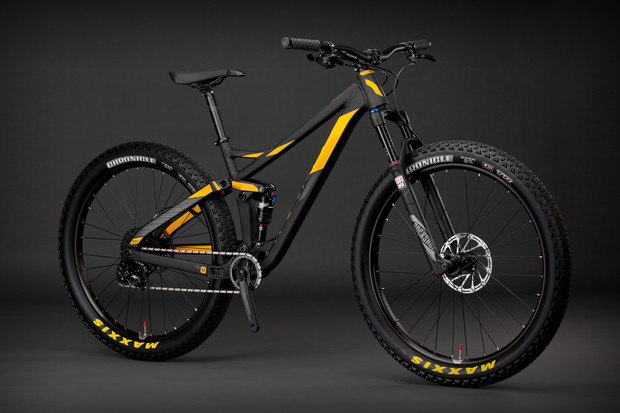 The plus-sized Devinci Hendrix. Devinci photo.
The plus-sized Devinci Hendrix. Devinci photo.
Plus is a great platform. And only growing since last year. I saw a guy at an enduro race running Maxxis 3.0" IKONs on his Intense Spider. And the Maxxis REKON is an even MORE badass plus-sized tire. This trend is hard to ignore, and probably the harbinger of yet another stratification in the MTB bike classes.
I spent a lot of time on Specialized’s 6fattie and Trek’s Stache last year and liked them both. Other great manufacturers like GT, Kona and Scott are all-in on plus tires. The benefits are many; Traction without a huge weight penalty, an extra bit of cushion from the tires, a larger contact patch, increased confidence. For beginning riders, the grip, lack of deflection and confidence in technical terrain could make this tire size an incredible confidence-booster .
 The Trek Stache, a TGR favorite. Trek photo.
The Trek Stache, a TGR favorite. Trek photo.
If Plus bikes don't stratify into another class, bike companies might try to split the difference in tires and coalesce models. You can currently run 2.5" tires on regular bikes, but 2.8" is where the ‘plus’ size starts so… just three tenths of an inch separate regular and plus. Side knobs and acceptable variation could easily bridge that. Some bikes can fit smaller plus tires on existing frames. And boost hubs are enabling wider rear ends anyway.
So, while the category is growing, it's in that teenage phase where things are a bit weird and all over the place. But, no matter what, bikes with plus tires ride great.
For the buyer: think about a plus-sized fork – because that could run either sized tire – and scope out how wide a bike's rear triangle is. A nice wide tire might fit into the bike you're eyeing anyway.
Also, wider tires require you to pay more attention to inflation pressure. Floor pumps are often inaccurate (mine is about five pounds off), so buy a digital gage.
#3: We Must Think Hard About E-MTBs
 Once it's open...
Once it's open...
If you want to ride an e-bike on trail, you have an ethical decision to make. It's not just about the bike and what it can do for your money.
If you get an e-bike for singletrack, it may be nice, you may love it, and it'll make you faster than your friends, so you win. But, for the long term health of us, as a group of people who like to bike in the woods, this might hurt our ability to access the land we'd like to ride on.
I'm a fan of E.O. Wilson, who recently wrote that "within groups, selfish individuals beat altruistic individuals, but groups of altruists beat groups of selfish individuals. Or, risking oversimplification, individual selection favors what we call sin and group selection favors virtue."
Acting selfishly aids your evolutionary fitness against your own group. Get an e-bike and you'll be faster than me. But acting benevolently helps the evolutionary fitness of your group against other groups. MTB riders acting together will be more successful against groups that seek to dominate the same natural resources we want. If you haven't noticed, we're in a land-access fight right now.
So, what's our decision? Generally "let the market decide" supports a selfish position benefitting one, or a few, in a group. Regulation, on the other hand, throttles back the ability of folks to super-achieve, and possibly innovate, but aids in the longevity of the overall group.
One or two companies could go out and make and market electric bikes, and make a bunch of money. And some of us will have an AWESOME time riding them. Or we could rope that shit in and make sure we're around for the longer haul.
Also, we're at the beginning of the curve, until the technology gets a LOT better, it's not worth it. Buy now if you're an early adopter and interested in being sexy, but you won't get the best value for your money – you'll be underwriting category trial and error. Let early adopters pay R&D costs and wait for e-bikes to get cheaper and lighter before making any call.

To their credit, Specialized has made one that's a beautiful bit of engineering. Love it or hate it, you have to admire it. They are pointing e-bikes at a very educated and dedicated segment of the market. A few other folks, like Bulls, have also made what looks to be a savvy MTB.
 TheBulls E-Stream FS Enduro – winning the nomenclature award for getting both "E" and "Enduro" into the name. Bulls photo.
TheBulls E-Stream FS Enduro – winning the nomenclature award for getting both "E" and "Enduro" into the name. Bulls photo.
However, the wholesale market penetration of this category opens the door for crowd-funded Silicon Valley e-bike wankers who make dangerous pieces of crap new cyclists won't be able to tell from legit machines. You might be a good rider, and get an awesome Specialized FSR, Felt or whatever, but what happens when a noob rides a 60-pound crap electric-motorbike 30 miles an hour down a busy multi-use trail?
#4: To Enduro, Or Not To Enduro? You Might Not Want To Enduro
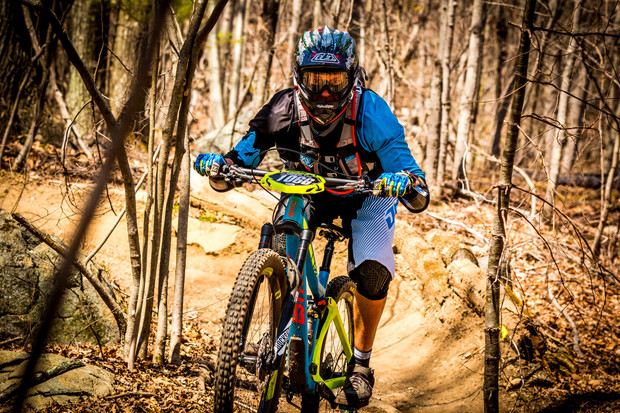 Whether 'tis nobler to suffer the gnar and danger of outrageous speed...
Whether 'tis nobler to suffer the gnar and danger of outrageous speed...
In the trail/AM/enduro space, bikes are moving apart again. It's tempting to look at the burliest bike category, short of a dual-crown DH bike, and think "If I get an enduro bike, it can handle most anything I throw at it – smooth track, trail, enduro and some lift access," and then want to buy it as 'the most versatile choice.'
While technically true, some (not all) hardcore 2016 enduro bikes are specifically engineered to shine in very fast, aggressive gravity situations. They're not as happy riding slow or flat trails. The YT Capra, the GT Sanction, the BMC Trailfox, the Santa Cruz Nomad, Mondraker, etc. (important to note: the previous few bikes are by no means a 'most burly' list – they are just what came to mind) all shine in their intended category. But do you really want a 32-pound daily driver with 160mm of travel?
I can't throw too many stones here. A Santa Cruz Nomad was my daily driver for years. But 120mm/130mm bikes are now SO capable. And light. Light bikes are a pleasure. And short-travel or hardtail plus-tire bikes make up for less travel with grip and tire squish.
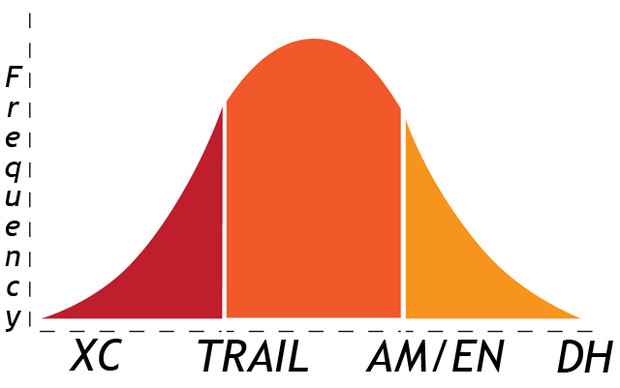
For the buyer: Draw a line from left to right. On the left write "XC", on the right, write "DH". Now make a bell curve of ALL the riding you might do, with the middle of the curve at the type of riding you do MOST. Be honest.
Buy for the middle of the bell curve, not the upper end. And put as much money into saving weight as you are able.
#5: Fat Bikes As Daily Trail Bikes
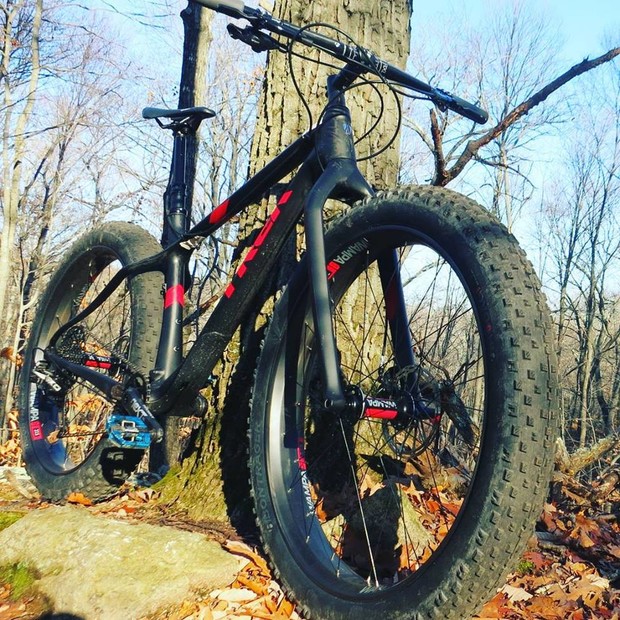 The Trek Farley. It works on all surfaces. Gunnar Waldman photo.
The Trek Farley. It works on all surfaces. Gunnar Waldman photo.
Okay, disregard what I said in the enduro section about buying a too-specific or heavy bike. Even though fat bikes started as cumbersome things used only on snow and sand, these bikes are pushing HARD to be your daily driver. They are the fastest expanding category for most major manufacturers – and with good reason. They are a hoot. And companies are feverishly engineering them for maximum versatility.
The massive increase in traction is very addictive. And very enabling. The kind of grip and confidence a 3.8" (or more) tire gives you opens up a whole lot of trail to any level of user.
As far as weight goes, the lightest mass-produced fatbike on the market is about 22 pounds. And Trek's Farley EX is a full-suspension fatbike that can be built to 25 pounds, with other companies not too far off. A year ago I would have said don't buy it as your first or only bike; that it's a nicety as a third bike or whatever.
Now, after spending the last four months on one (without any snow), I'd say definitely throw a leg over one when considering purchasing a one and only bike.
For the buyer: test ride them. They may NOT be for you, but you should know what you're dealing with. Test it along with bikes that have other tire widths. Also, as the technology and theory in these bikes has changed fast over the last couple years, newer versions might be more fitted toward normal trail riding than older used models you could be looking at.
#6:Aluminum Components Narrow the Gap With Carbon
 i9's super capable Trail S wheels. They're stiff, make that sound you want as your ringtone, and costs hundreds, not thousands, of dollars. i9 photo.
i9's super capable Trail S wheels. They're stiff, make that sound you want as your ringtone, and costs hundreds, not thousands, of dollars. i9 photo.
Okay carbon people; cool out. Lots of manufacturers have new super pricey carbon rims and, yes, spending money losing weight on wheels is the most effective place to drop your cash for a performance boost.
HOWEVER, there's a nice feel to quality aluminum rims, and they don't deflect off the sides of features – which carbon rims sometimes do because they're so stiff. And if you're doing more descending or enduro, the weight savings are not that important.
This is also true of frames and handlebars, for what it's worth. Many frame and component makers are putting some thought back into cranks, bars, stems that aren't carbon. They're usually identical in design and function, with not that much of a weight penalty.
For the buyer: Focus on hubs with fast engagement. Companies like i9, Stans, Easton, DT Swiss, etc. are making great aluminum rims. And pick your spots for the other stuff. Again, aluminum weight can get pretty close to carbon.






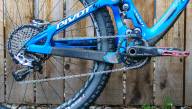



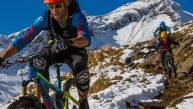
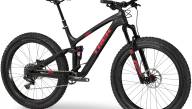




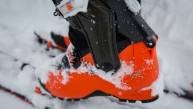






Rollit
April 21st, 2016
Excellent Overview—I think the e bike thing is a double edged sword—as I circle down the drain in the coming years I am probably gonna want one, but hopefully not at the expense of trail access. Ideally there will be some line drawn that trail managers can live with which protects non motorized access only but allows some light version of e bikes.
Gunnar Waldman
April 21st, 2016
Thanks, I appreciate it. Whether it’s light versions, or separate trails, or a time share, I’m hopeful we can figure it out so everyone is happy. I’ve met guys in their 60s who have given decades to this sport and thought “They DESERVE one.” Access is key, if we mess that up, the sport goes away. And for what it’s worth, I’m sure you’ll be good for a while.
JohnBoy
April 22nd, 2016
Gunnar is always on the bleeding edge. I agree that the 27+ bikes are going to be big. I think the ebike sales should be limited to us old men over 50 as an equalizer.
Gunnar Waldman
April 22nd, 2016
I don’t know about the edge. But the bleeding part I’ve got down. Yes, show your AARP card and get a pass!